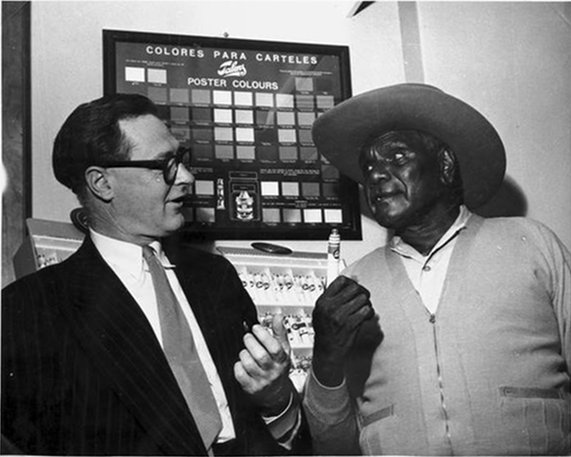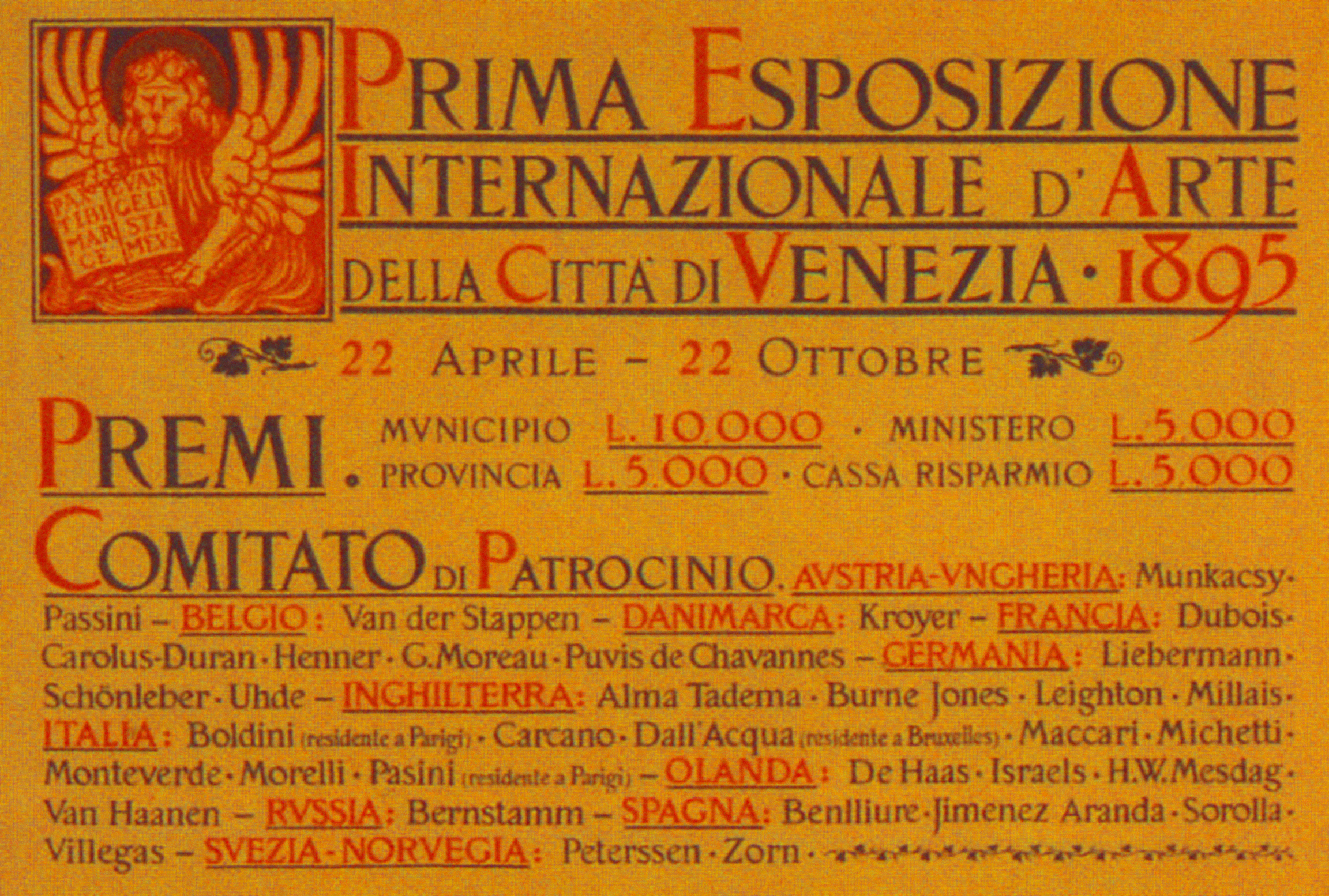|
Contemporary Indigenous Australian Art
Contemporary Indigenous Australian art is the modern art work produced by Indigenous Australians, that is, Aboriginal Australians and Torres Strait Islander people. It is generally regarded as beginning in 1971 with a painting movement that started at Papunya, northwest of Alice Springs, Northern Territory, involving Aboriginal artists such as Clifford Possum Tjapaltjarri and Kaapa Tjampitjinpa, and facilitated by white Australian teacher and art worker Geoffrey Bardon. The movement spawned widespread interest across rural and remote Aboriginal Australia in creating art, while contemporary Indigenous art of a different nature also emerged in urban centres; together they have become central to Australian art. Indigenous art centres have fostered the emergence of the contemporary art movement, and as of 2010 were estimated to represent over 5000 artists, mostly in Australia's north and west. Contemporary Indigenous artists have won many of Australia's most prominent art prizes. ... [...More Info...] [...Related Items...] OR: [Wikipedia] [Google] [Baidu] |
Indigenous Australians
Indigenous Australians are people with familial heritage from, or recognised membership of, the various ethnic groups living within the territory of contemporary Australia prior to History of Australia (1788–1850), British colonisation. They consist of two distinct groups, which include many ethnic groups: the Aboriginal Australians of the mainland and many islands, including Aboriginal Tasmanians, Tasmania, and the Torres Strait Islanders of the seas between Queensland and Papua New Guinea, located in Melanesia. 812,728 people Aboriginality, self-identified as being of Aboriginal and/or Torres Strait Islander origin in the 2021 Australian Census, representing 3.2% of the total population of Australia. Of these Indigenous Australians, 91.4% identified as Aboriginal, 4.2% identified as Torres Strait Islander, and 4.4% identified with both groups. The term Aboriginal and Torres Strait Islander peoples or the person's specific cultural group, is often preferred, though the term ... [...More Info...] [...Related Items...] OR: [Wikipedia] [Google] [Baidu] |
Judy Watson
Judy Watson (born 1959) is an Australian Waanyi multi-media artist who works in print-making, painting, video and installation. Her work often examines Indigenous Australian histories, and she has received a number of high-profile commissions for public spaces. Early life and education Judy Watson was born in Mundubbera, Queensland in 1959. She is a Brisbane-based Waanyi artist. She was educated at the Darling Downs Institute of Advanced Education in Toowoomba, where she received a Diploma of Creative Arts in 1979; at the University of Tasmania where she received a bachelor's degree (1980–82); and at Monash University, where she completed a graduate diploma in 1986. At Tasmania University she learned many techniques, among them lithography, which has influenced her entire body of work. Career Watson trained as a print-maker, and her work in painting, video and installation often relies upon the use of layers to create a sense of different realities co-existing. As an Abo ... [...More Info...] [...Related Items...] OR: [Wikipedia] [Google] [Baidu] |
Sculpture
Sculpture is the branch of the visual arts that operates in three dimensions. Sculpture is the three-dimensional art work which is physically presented in the dimensions of height, width and depth. It is one of the plastic arts. Durable sculptural processes originally used carving (the removal of material) and modelling (the addition of material, as clay), in stone, metal, ceramic art, ceramics, wood and other materials but, since Modernism, there has been almost complete freedom of materials and process. A wide variety of materials may be worked by removal such as carving, assembled by welding or modelling, or Molding (process), moulded or Casting, cast. Sculpture in stone survives far better than works of art in perishable materials, and often represents the majority of the surviving works (other than pottery) from ancient cultures, though conversely traditions of sculpture in wood may have vanished almost entirely. In addition, most ancient sculpture was painted, which h ... [...More Info...] [...Related Items...] OR: [Wikipedia] [Google] [Baidu] |
Aboriginal Australian Art
Indigenous Australian art includes art made by Aboriginal Australians and Torres Strait Islanders, including collaborations with others. It includes works in a wide range of media including painting on leaves, bark painting, wood carving, rock carving, watercolour painting, sculpting, Aboriginal ceremony, ceremonial clothing and sandpainting. The traditional visual symbols vary widely among the differing peoples' traditions, despite the common mistaken perception that dot painting is representative of all Aboriginal art. Traditional Aboriginal art There are many types of and methods used in making Aboriginal art, including rock painting, dot painting, rock engravings, bark painting, carvings, sculptures, weaving, and string art. Australian Aboriginal art is the oldest unbroken tradition of art in the world.Worms, Ernest ''Contemporary and prehistoric rock paintings in Central and Northern North Kimberley'' Anthropos Switzerland 1955 p. 555 Stone art Rock art, including paint ... [...More Info...] [...Related Items...] OR: [Wikipedia] [Google] [Baidu] |
Western Desert Cultural Bloc
The Western Desert cultural bloc (also capitalised, abbreviated to WDCB, or just Western Desert) is a cultural area, cultural region in central Australia covering about , used to describe a group of linguistically and culturally similar Aboriginal Australian nations. Languages The term ''Western Desert cultural bloc'' is often used by anthropologists and linguists when discussing the 40 or so Aboriginal groups that live there, who speak dialects of one language, often called the Western Desert language. The term ''cultural bloc'' is used by anthropologists to describe culturally and linguistically similar groups (or nations) of Aboriginal Australians, Aboriginal peoples of Australia. Country According to anthropologist Robert Tonkinson: Extending over a million square miles, the Western Desert... covers a vast area of the interior of the continent. It extends across western South Australia into central and central northern Western Australia (south of the Kimberleys) and south-we ... [...More Info...] [...Related Items...] OR: [Wikipedia] [Google] [Baidu] |
Dot Painting
Papunya Tula, registered as Papunya Tula Artists Pty Ltd, is an artist cooperative formed in 1972 in Papunya, Northern Territory, owned and operated by Aboriginal people from the Western Desert of Australia. The group is known for its innovative work with the Western Desert Art Movement, popularly referred to as dot painting. Credited with bringing contemporary Aboriginal art to world attention, its artists inspired many other Australian Aboriginal artists and their styles. The company operates today out of Alice Springs and its artists are drawn from a large area, extending into Western Australia, west of Alice Springs. Background In the late 1960s, the Australian Government moved several different groups living in the Western Desert region to Papunya, north-west of Alice Springs in the Northern Territory, to remove them from cattle lands and assimilate them into western culture. These displaced groups were primarily Pintupi, Luritja, Walpiri, Arrernte, and Anmatyerre grou ... [...More Info...] [...Related Items...] OR: [Wikipedia] [Google] [Baidu] |
Figurative Art
Figurative art, sometimes written as figurativism, describes artwork (particularly paintings and sculptures) that is clearly derived from real object sources and so is, by definition, representational. The term is often in contrast to abstract art: Since the arrival of abstract art the term figurative has been used to refer to any form of modern art that retains strong references to the real world. Painting and sculpture can therefore be divided into the categories of figurative, representational and abstract, although, strictly speaking, abstract art is derived (or abstracted) from a figurative or other natural source. However, "abstract" is sometimes used as a synonym of non-representational art and non-objective art, i.e. art which has no derivation from figures or objects. Figurative art is not synonymous with figure painting (art that represents the human figure), although human and animal figures are frequent subjects. Formal elements The formal elements, those aesthetic ... [...More Info...] [...Related Items...] OR: [Wikipedia] [Google] [Baidu] |
National Gallery Of Australia
The National Gallery of Australia (NGA), formerly the Australian National Gallery, is the national art museum of Australia as well as one of the largest art museums in Australia, holding more than 166,000 works of art. Located in Canberra in the Australian Capital Territory, it was established in 1967 by the Australian Government as a national public art museum. it is under the directorship of Nick Mitzevich. Establishment Prominent Australian artist Tom Roberts had lobbied various Australian prime ministers, starting with the first, Edmund Barton. Prime Minister Andrew Fisher accepted the idea in 1910, and the following year Parliament established a bipartisan committee of six political leaders—the ''Historic Memorials Committee''. The Committee decided that the government should collect portraits of Australian governors-general, parliamentary leaders and the principal "fathers" of federation to be painted by Australian artists. This led to the establishment of what b ... [...More Info...] [...Related Items...] OR: [Wikipedia] [Google] [Baidu] |
Earth's Creation
''Earth's Creation'' is a 1994 painting by the Australian Aboriginal artist Emily Kame Kngwarreye. It was painted in 1994 at Utopia, Northern Territory, north east of Alice Springs in central Australia. Artist and painting Kngwarreye was a senior Anmatyerre woman, who only commenced painting when she was aged about 80. In the following eight years, she produced 3,000 or more paintings, an average of one painting per day. ''Earth's Creation'' is described as part of her "high-colourist" phase. It is regarded as one of the artist's masterpieces, representing in her words the "whole lot... everything" – Earth's Creation. The swirling blues, greens and yellows evoke what Kngwarreye called the "green time", after the rains come and the bush erupts with new life in her country, Alhalkere. She painted with a "dump dot" technique, also known as "dump dump", using her brush to pound the acrylic paint onto the canvas and create layers of colour and movement. Due to its large size, t ... [...More Info...] [...Related Items...] OR: [Wikipedia] [Google] [Baidu] |
Emily Kngwarreye
Emily Kam Kngwarray (c.1914-1996) was born in her Ancestral lands, Alhalker located in the Sandover region of the Northern Territory, Australia. One of the world’s most significant contemporary painters to emerge in the twentieth century Kngwarray practiced in batik and painting on canvas, creating art that embodied her detailed knowledge of the places she lived in throughout her life. She layered motifs representing the plants, animals and geological features that formed the desert ecosystems around her. Beginning in batik in 1977 and moving to painting on canvas in 1988 she also occasionally worked on paper. In the early 1990s Kngwarray made some prints, including etchings and linocuts. Creating an expansive catalogue of works in her life, Kngwarray was at the forefront of the Aboriginal artistic revolution in Australia. Kngwarray’s unique style and powerful creative vision came to redefine contemporary Aboriginal art and gained worldwide attention. In 1996 Kngwarray passed ... [...More Info...] [...Related Items...] OR: [Wikipedia] [Google] [Baidu] |
Venice Biennale
The Venice Biennale ( ; ) is an international cultural exhibition hosted annually in Venice, Italy. There are two main components of the festival, known as the Art Biennale () and the Venice Biennale of Architecture, Architecture Biennale (), which are held in alternating years (hence the name). There are also four additional components, each usually held on an annual basis, comprising , , Venice Film Festival, and Venice Dance Biennale. Between them they cover contemporary art, architecture, music, theatre, film, and contemporary dance. The main exhibition is held in Castello, Venice, Castello and has around 30 permanent pavilions built by different countries. The Biennale has been organised every year since 1895, which makes it the oldest of its kind. Since 2021, the Art Biennale has taken place in even years and the Architecture Biennale in odd years. History 1895–1947 On 19 April 1893, the Venetian City Council passed a resolution to set up an biennial exhibition of I ... [...More Info...] [...Related Items...] OR: [Wikipedia] [Google] [Baidu] |





